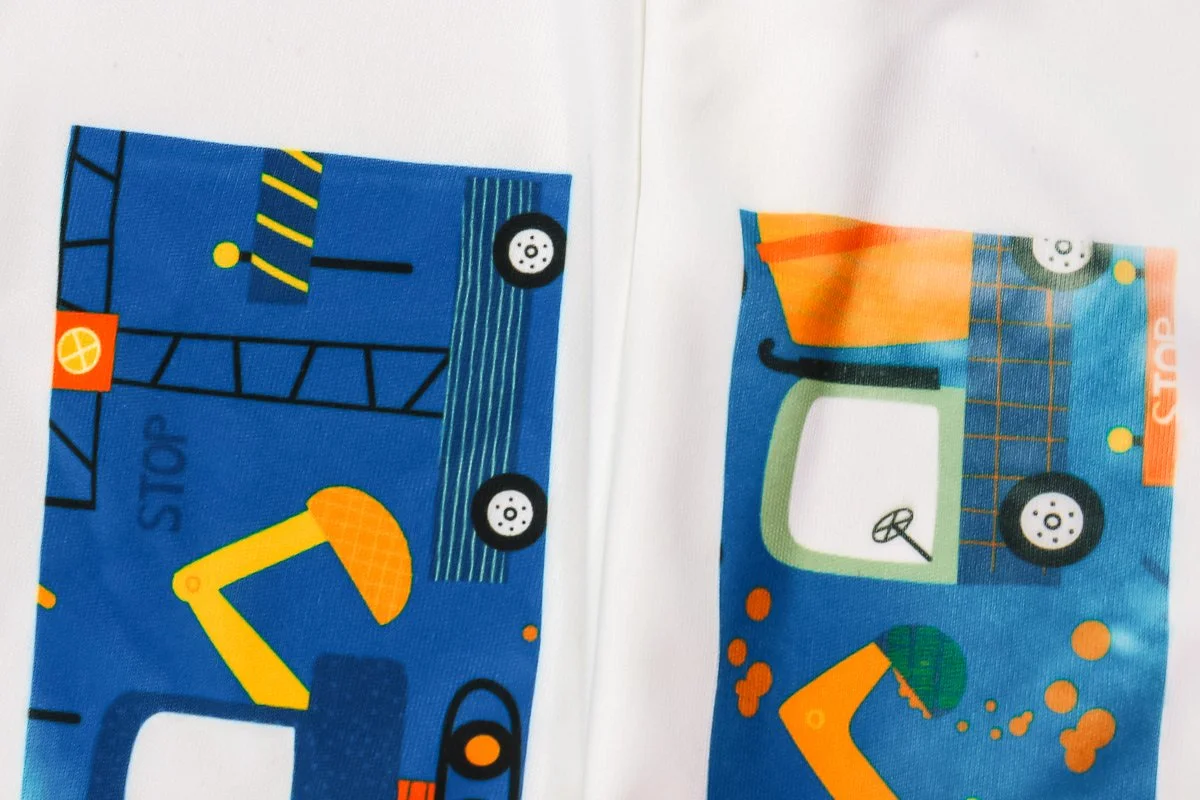5 Major Sublimation Problems and Their Solutions
Sublimation printing requires attention to detail to execute the process with complete accuracy. Sublimation printing always comes with a risk. If you are facing this hurdle during sublimation printing, or your projects aren’t up to the mark, we are here to point out the issues you might be facing along with perfect solutions. Let’s get your sublimation printing done right.
Let’s look into common problems faced during the sublimation printing process and its appropriate solutions.
Unwanted Bands in Sublimation
Banding or the small streaks on the sublimation printing is the most usual barrier the printers face. Lines or bands appear on the print more often, diminishing the printing quality. These bands appear for several reasons, such as deficiency in equipment, dried printing ink, or the nozzle.
Missing ink at printouts causes the majority of banding issues. When printing is not well executed, lines appear on the final prints. This happens due to two primary reasons:
Dried ink in printing machine
Clogged nozzle
Dried-out ink in a printing machine usually lacks smooth printing, and the print comes out with bands and streaks. You can resolve this issue with the simplest solution. The printing machine must run daily or simply inject a small amount of ink in the head and run the device to avoid drying out. Or perform head-cleaning of the printer to get rid of banding.
A clogged nozzle is another problem to smooth printing. This issue demands regular machine maintenance and nozzle cleaning. Just carry out this, and you will witness the perfectly sublimated print without banding.
Sublimated Prints Devoid of Vibrance
The final print lacks color coordination resulting in implausible designs, this is an issue in sublimation. Output color speaks for the product's quality; when it comes out flawed, the product’s worth declines. This issue needs an immediate solution.
The two primary issues when color mixing :
Faulty printer
Computer Lacking Coordination
The computer is displaying RGB color mode while the printer is set up on CMYK mode; this seems to be a minor issue in setting but can lead to a significant loss. It can be resolved using the free RIP color setting program, which accurately manages the color display. If you aren’t satisfied, get the paid version of RIP and ensure excellence in color coordination and presentation.
Sublimated Prints Devoid of Vibrance
Sublimation prints are lacking in vibrance, and faded prints appear on apparel. These low-quality printouts lead to complete disappointment. To know more about faded-out prints, visit Why my dye sublimation print faded?
There can be several reasons behind low vibrancy, such as:
Printing on the incorrect side of sublimation-paper
The accurate side is white with a shiny appearance. The other side lacks the shine and is off-white. That’s why the final print lacks bright colors and becomes dull and dusky.
Sublimation printing on improper fabric
Sublimation is done right when the fabric is created with more than 65% polyester. If the material lacks the required polyester, the final print comes out as faded and is deprived of the expected vibrance. To overcome this issue:
Choose the fabric assembled with more than 65% polyester.
Research before picking up the fabric for printing.
Always go for trial printing on the fabric before the actual process.
Always research the perfect fabric for sublimation printing before carrying out the process.
Dotted Sublimated Prints
Dots on final printouts interrupts the shine and smoothness of the image, thus declining the worth of the outfit. Dots pose a great threat to final prints and need prompt action to overcome this issue. The dots can be of white or black colors or appear the same as the printing colors. To know more about the reasons behind dots, click here.
Moisture in the Substrate
Suppose dots are the same color as the printing colors and appear after printing. Humidity and moisture are the primary culprits in this issue. When substrates are not pre-pressed and transferred directly to final processing, then dots are the ultimate consequence.
Solution:
Pressing the substrate before printing press so that all moisture is withdrawn.
Substrate or fabric is dried, cooled, and deprived of moisture.
Transfer the sublimation paper to fabric for final printing.
Press the fabric with the print and get your sublimation printing done.
White Dots
White-colored dots appear due to the deficiency in the quality of printing paper. When inks are not absorbed properly, it leads to white empty areas. These areas appear as dots and decline the quality of sublimation printing.
Black or Colored Dots
Lower quality inks or faulty printers can be the root cause of dotted printouts. Whether printing inks or any other type, they are always prone to drying out and blocking the printer output. Always check out the printer before jumping to any conclusion.
Using prime quality inks so that they can be smoothly imprinted onto the fabric is the best solution. Keep a regular eye on the printer’s nozzle to remove obstacles, thus preventing the dotted prints.
Problematic Extra Ink
Pay attention during the print transfer process because ink smudges left on the fabric can happen. The ink will transfer to any part of your apparel during pressing, leaving a permanent mark.
Solution:
Check the outfit before pressing the print.
Cover the smear with heat-resistant tape to avoid a permanent mark.
Remove extra ink from printing paper before pressing to avoid messy print.
Have any sublimation ideas to start up your business? check us out and get a free quote.




